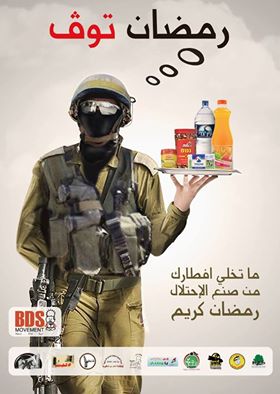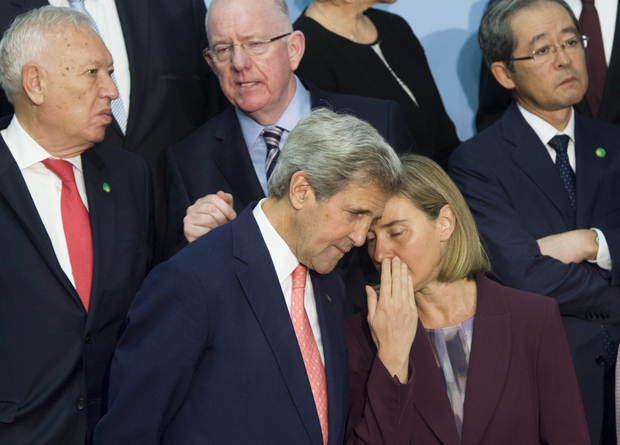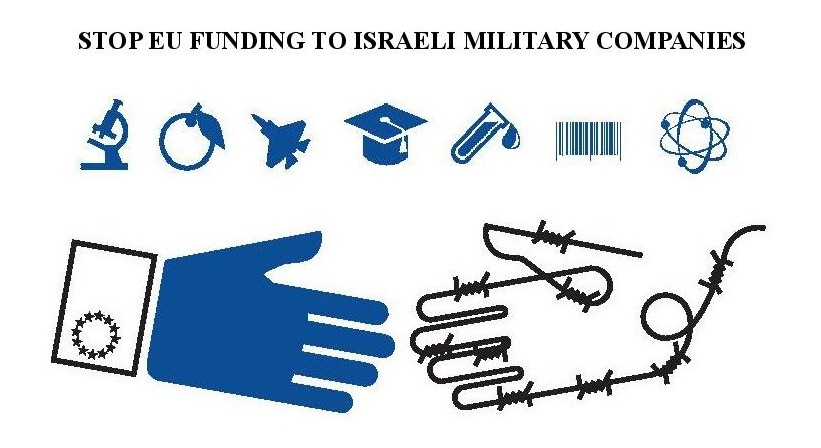Newly built factory destroyed in Ni'lin. The road from Ramallah to Ni’ilin brings us deep into Area C, the 60% of the West Bank declared under the Oslo Accords as under full Israeli control and prime target for Israeli annexation policies, in disregard of IHL and its obligations under the Geneva Convention. The villages is witness to the complex interaction of Israeli policies of land grab, isolation, economic stranglehold and colonization – all aimed at displacing the Palestinian population and implanting illegal settlers in their place. Yet, the village continue to resist.
As Salah takes us to his village situated 17 kms northwest of Ramallah and three kms from the Green Line, he points at the settlements: Na’ale, then Nilli, then Modi’in Illit and Hashmona’im, one after the other, built on the land of Palestinian villages. The settlements surrounding Ni’lin recall the name of the Palestinian village itself. “Step by step, Israel tries to occupy your mind, imposing a different topography. In few years’ time, the whole area will be addressed after the name of the settlements rather than that of the village”, Salah says.
The first settlement was established in 1985 and, right after the Oslo Agreement was signed, road 446, splitting Ni’lin in two, was built in order to connect the Israeli illegal settlements with the locations on the other side of the Green Line. Israel has already announced plans to build a tunnel under the road to connect the upper and lower parts of Ni’lin, allowing Israel to turn Road 446 into a segregated-setter only road. Subsequently, access for Palestinian vehicles to this road and to the main entrances of upper and lower Ni’lin will be closed. Since the tunnel will be the only entryway to Ni’lin, Israel will have control over the movement of Palestinian residents in and out of what will be an isolated ghetto.
Already today, when we reach Ni’lin, a huge checkpoint in front of us testifies the entrance to the big Hashmona’im. We are few kms from the Green Line.

Due to the difficulty to find job in an economy constantly undermined by Israeli destruction, many Palestinians in rural areas are already forced to work in the settlements. Ni’ilin though, represents an exception. Its lively economy based on shops, factories and businesses includes seven factories and one of the most important petrol deposits in the West Bank. Settlers even come here to get their cars fixed and to buy products. Here, in October, Bahar and his brother started a poultry slaughterhouse. The factory, previously owned by the father, was enlarged with a huge investment and the best machines, imported from Europe. 150 people have been working there. As Israel holds control over construction in the area, they started building only after obtaining a building permit from the occupation authorities. An army inspection two months ago gave them the green light. So they went ahead. Nevertheless, on April the 6th at 2 am, the military came with bulldozers to tear down the factory without even showing a demolition order. “When asked for one, the soldiers told us it was at the office. We went there, but there was none. Despite that, they destroyed the factory completely. Our business was going very good, we were following the whole process from slaughtering to packaging and have been selling our products in Ramallah, Bethlehem and Hebron supermarkets”, Bahar says. When asked whether they are going to appeal to the Israeli Supreme Court, considering that the demolition was not even following the procedures established by the same occupation forces, Bahar tells us they cannot afford to lose any more money. “What is likely to happen is that the Supreme Court orders us to pay for the demolition”, he adds bitter. Not wanting to risk to loose everything once again at the whim of the Israeli military, Bahar concludes that they have no plans to build the factory once again.

All these actions are in clear violation of International Humanitarian Law. The IV Geneva Convention allows seizure of land by the occupying power only in case of military needs and for the sake of protection of the civilian population. Wanton destruction of property is prohibited as much as ‘any measures aiming at creating unemployment or at restricting the opportunities offered to workers in an occupied territory, in order to induce them to work for the Occupying Power’. Israeli policies instead are a constant and painstaking effort to undermine and weaken local economy and means of livelihoods.
Ni’lin’s proximity to the green line turns it into a desirable area for Israeli expansion. Already in 1948, 40 thousand dunums of Ni’lin’s 58 thousand dunums of land were annexed to the newly created Israeli state. The settlements built since the 80s meant a progressive expropriation of further ten thousand dunums and the implantation of an Israeli population. From the ruins of the factory, we see the settlement of Mo’din Illit, counting 75.000 settlers. Ni’lin is being transformed into a closed area isolated from the other Palestinian villages while the apartheid Wall winding through Ni’lin’s lands annexes more and more land to the settlements. Constraining more and more the liveable space, Israel wants to make life impossible and forcibly expel people from their village – yet another step in the Israeli effort to gain permanent territorial control of Area C, pushing Palestinians into 40% of the West Bank and 13% of their original homeland. Undermining the villages’ economy is an essential part of this plan. This is not only the case of Bahar’s business. Ni’lin also has one of the major petrol deposits in the West Bank. This part of the village, is constantly monitored by soldier stationed in a watch tower. When the Israeli military every now and then decides to close the entrance road to the village, this causes major problems, because trucks coming from all over the West Bank cannot refurnish with petrol.
Ni'lin, though, resists. Like many other villages in the West Bank, left alone both by the Palestinian Authority and the international community, they are organizing local protests and solidarity among the villagers. Salah tells us how 5 youth have been killed in the demonstrations against the apartheid Wall. With a proud look, he tells us how people keep on fighting. “When we see there is a new mark on the land indicating a new expansion of the Wall, people go at night and remove the signs. At other times we physically stay present there in ongoing sit-ins and prevent the bulldozers from working at the construction of the Wall.” So far this popular resistance strategy and resilience made 3 Israeli companies drop the construction contract for the Wall, due to the resilience of the village.




